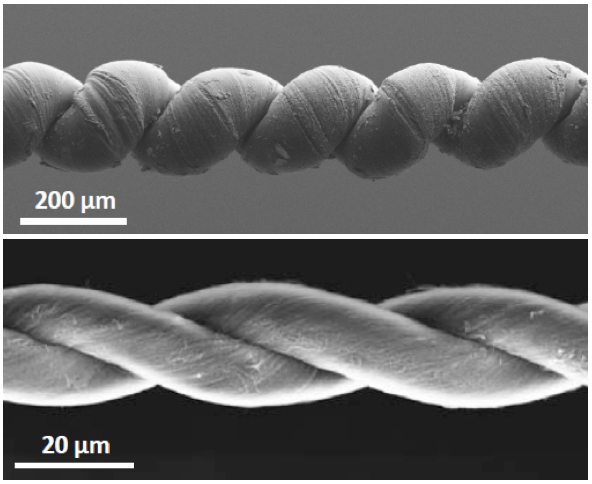Nanotube Yarn Infused With Wax Makes Incredibly Strong Artificial Muscles
Yarn muscles could launch catapults, power intelligent textiles, and help robots move more weight.

Artificial muscles will offer future robots greater flexibility and lighter weight than a machine joint, expanding and contracting again and again. Although there are plenty of awesome robotic examples and prototype bionic uses, artificial muscles have been limited by many factors, like their response times or their power requirements. Now comes a new nanofiber muscle combining carbon nanotubes with candle wax, which might outperform any previous artificial muscle.
These nanotube fibers can lift more than 100,000 times their own weight and generate 85 times more mechanical power during contraction than natural muscles of the same size, according to scientists at the University of Texas at Dallas and collaborators from Australia, China, South Korea, Canada and Brazil.
They work by combining a waxy substance with a yarn made of carbon nanotubes. The wax expands in response to heat (or a voltage), and the yarn volume increases while its length contracts. This happens because it’s twisting, as a news release from UT Dallas explains. As the wax melts or solidifies, it twists and untwists, generating motion. The yarn can be looped, sewn, braided or whatever else you do with yarn, so it could be easy to use it in new types of textiles. You could design blankets that get thinner when it’s warm, maybe, or tapestries that tell you which chemicals are in the air.
Yarn muscle could be commercialized for small motors, the researchers say. Unfortunately, they won’t be replacing our fragile human parts anytime soon.
“While we are excited about near-term applications, these artificial muscles are presently unsuitable for directly replacing muscles in the human body,” said the research team leader, UT Dallas chemistry professor Ray Baughman.
The paper will be published tomorrow in the journal Science.